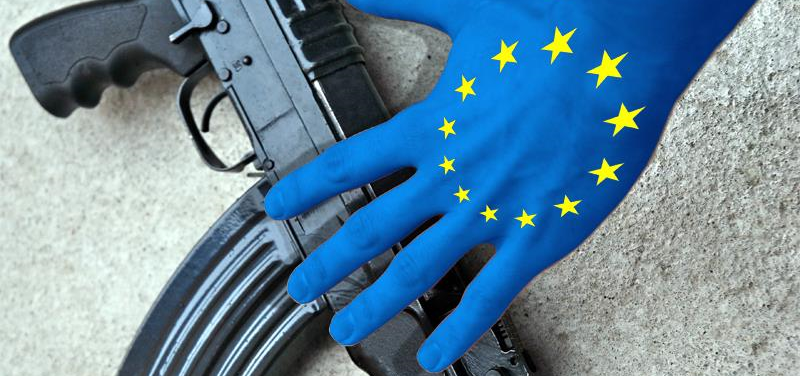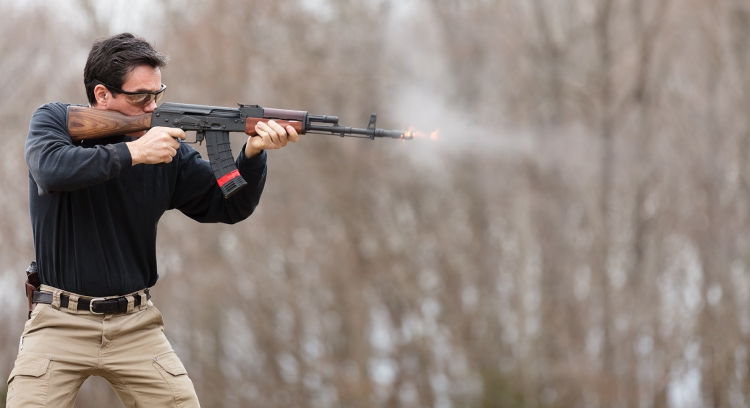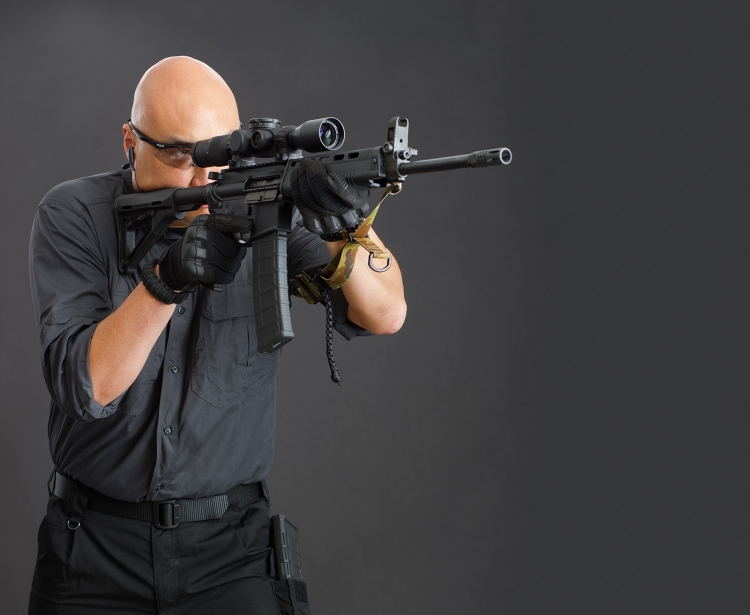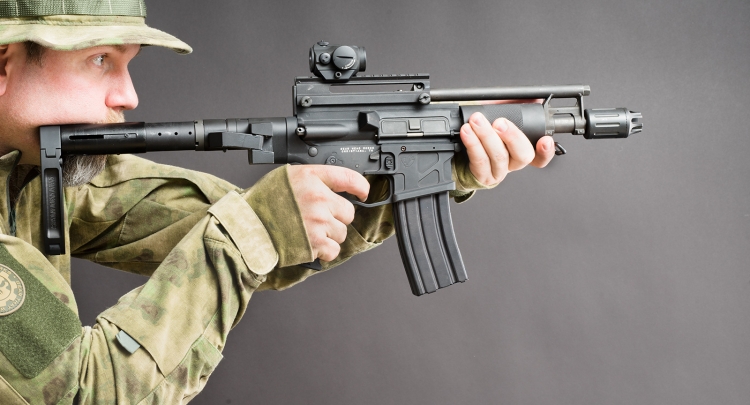The EU weapons directive (EUGunban) was presented in November 2015 only a few days after the attack in France. It was adopted in March 2017 after a long and hard struggle in Brussels with many changes. It is to be implemented in all EU countries by September 1st 2018 into national laws. In France, the timetable has been adhered to.
EUGunban: Council’s claim
In a press release and a video the European Council praised itself that new barriers to legal weapons possession are being introduced. It claims that ”the civilian use of the most dangerous semi-automatic firearms is banned” and that all alarm guns are to be registered. Both would combat terrorism, as criminals would now have a hard time acquiring weapons.
Our German partner reported this in May 2017: Link

Screenshot Video – Europäischer Rat Mai 2017
EUGunban: Reality Check
Fortunately, neither all fully automatic weapons were banned in museums and private collections, nor could a ban on the ”most dangerous semi-automatic weapons” be enforced. Instead, some firearms have been moved from category B (permitted with license) to category A (prohibited, only permitted with special license). In addition, those high requirements now apply to deactivated weapons and salute weapons (which were previously available without restrictions at the age of 18) as well as to large magazines.
GRA reported in March 2017: EUGunban ohne Änderungen genehmigt
EUGunban: Implementation in France
As many may know, France, along with Sweden and Germany, was one of the countries in the EU Gunban that initially made the toughest demands. It is therefore very interesting to see how France implemented the EU weapons directive after their change of government. The new law was published on June 29th 2018 and is already available online with Question & Answer pagesn. As many questions remain unanswered, the Firearms-United Partner UNPACT has taken care of them: Link
Here are the most important changes of the EU with remarks to the German laws:
Category A6 : EUGunban and established rights
Definition of demilitarized firearms: weapons that were originally full-auto, used by military and/or police, sold by the government, bought by distributors, converted to semi-automatic and made available to the civilian market.
No newly demilitarized firearms will end up on the civilian market. However, modern replicas of these firearms, even those built with a small number of parts from original firearms, are not considered demilitarized firearms and are therefore not covered by this ban.
The French ”grandfathering clause” allows further possession, but not sale, only transfer to dealers who are allowed to trade in category A weapons. (Analogous to German full-autos up until 1972).
Category A7 : EUGunban for hunters
This category covers all semi-automatic central-fire handguns and rifles if they are equipped with a magazine capacity of 10+ cartridges for rifles or 20+ cartridges for handguns.
Anyone wishing to purchase a new gun must provide a certificate from the French Shooting Federation FFTir (Monopoly Federation).
In case of a fixed magazine, the owner must also present an FFTir certificate stating that the weapon meets the specifications required for the exercise of an officially recognized discipline.
All French sport shooters can still own and use interchangeable 10+ magazines. Only the quantity is capped at 10 unrestricted magazines per gun.
For the purchase of new unrestricted magazines the presentation of the sport shooter license is necessary.
Semi-automatic rimfire guns remain in category B, no matter which magazine is used. (The implementation of the directive would be the right time to finally lift the nonsensical ban on semi-automatic rim fire rifles for sport shooters in Germany, which does not even exist in England).
Category A8: EUGunban with limited grandfathering
Category A8 will be particularly difficult to implement
A new category of prohibited firearms includes rifles with overall length that can be reduced to less than 60 cm by use of a folding stock, telescopic stock or easily removable stock.
The French ”grandfathering clause” allows short-term possession under the condition that the total length is to be modified to at least 60 cm.
In France licenses are to be extended after five years. For A8 weapons no extension is possible (in contrast to A7). (Analogous to the German prohibition of short barrels and pistol grips for pump-action shotguns in 2003)
Category B/C: EUGunban for hunters
The French moved some weapons from C to B or from B to C. The main focus lies on barrel length (60 cm), overall length (80 cm) and magazine capacity (5 rounds).
This can be seen in the press release of the manufacturer Verny-Carron. Verny-Carron offers to reduce the magazine capacity and/or extend the barrels for certain hunting shotguns, so that these weapons may continue to be possessed legally with a hunting license. In addition, the manufacturer confirms that certain types of weapons remain in C, although the three characteristics do not apply, and that certain B weapons have now slipped into C. Again, the French have considerably more categories than the EU weapons directive, which is not necessarily conducive to harmonization of the internal market.
Category C6: EUGunban for decorative weapons
The most important change is that previously freely available decorative weapons can now only be owned under license. This was one of the main concerns of the EU. The EU originally wanted the weapons to remain in the original category despite deactivation. They had then agreed on category C (registration not permission). All deactivated weapons that were previously classified as category A, B or C would now have to be registered within the next few months. Otherwise you will be liable to prosecution (2 years in prison, 30,000 € fine, confiscation of the license and all legal weapons for the next five years).
France has found a reasonable solution for possession: Only weapons acquired after 13 June 2017 must be registered. Others only, if one would like to sell them – however with the condition to have the weapons deactivated under current laws. However there are still various regulations, which make life a misery for collectors and reenactors. Read more here: Link
Category D – Free weapons
This category has been repealed as single barrel shotguns have now been moved to category C.
However, France – like the Czech Republic – uses this category for all weapons that are not firearms in categories A to C, but are subject to weapons law and are freely available from the age of 18. In France, this includes antique weapons, newly manufactured alarm guns, pepper spray, stun guns, swords, batons and deactivated ”war material”. Antique weapons include weapons built until 1900, unless they are explicitly assigned to categories A to C, reproductions of black powder weapons, antique weapons built after 1900 and on a state list. (Germany should adopt a similar approach so that single-shot black powder/gun firearms can continue to be possessed without registration).
Sale of second hand weapons now more difficult
Private sale may only take place under supervision of an arms dealer or broker. Furthermore private shipping is forbidden, too. (Germany, on the other hand, is working on transaction numbers of the NWR, which should enable such sales to continue and has already introduced the requirement of IDENT shipping. Therefore we should not adopt this rule).
EUGunban of salute weapons forgotten?
The new categories A9, B8 and C5 are missing from the list. This includes salute weapons that have been converted from a category A to C. These, too, were previously freely available for sale and are now not only subject to registration (C5), but also subject to permission (B8) or even completely prohibited (A9) according to the EU directive.
Roughly a third of the weapons which terrorists in France had used were converted salute weapons. These salute or theatre weapons – wrongly called alarm guns – were in the focus of EU legislation. It should be noted that these weapons were not converted to strict German, French, Italian, English or even Finnish laws (which made disassembly almost impossible) but were converted according to Slovenian law – which is far too lenient. While the law covers almost everything concerning deactivated weapons, nothing is said about salute weapons.
Maybe they are still waiting. The EU Commission, after it was asked by parliament in 2008 and had a study carried out in 2015, is about to enact rules for salute and alarm guns, which – according to rumours – should almost be a 1:1 copy of the German rules.
At least something positive 
No more paper work for suppressors. The licensed possession of a weapon is sufficient to acquire a suppressor. It will not be registered either. (We should implement that.)
Unannounced checks for the administrative examination of the gun storage are explicitly forbidden. (We should implement that)
Hereditary and found weapons (category C) may be kept by anyone who presents the weapon to a gunsmith or broker and submits a medical certificate confirming they fitness for possession. (Without blocking devices as is the law in Germany). There are slightly higher requirements for inherited and found weapons (category B). Reporting has to be done within three months.
Conclusion
French lawmakers may have read the EU study on weapons crime, which was unfortunately published after the votes were made in the EU Parliament. The study pointed out that crime will increase and not decrease as a result of the rules:
The firearms market is likely to be vulnerable to crime throughout the firearms life cycle. All thirteen options have a medium or high crime risk. One cause for increasing the risk is the inclusion of certain deactivated weapons under Category A or Category C. The new requirements would limit the current availability of said weapons. As a result, users may revert to illegal channels to retain or acquire their deactivated firearms. The same may happen if the specific ban on moving certain semi-automatic firearms from category B to category A comes into force.
France has done its utmost to preserve semi-automatic firearms for sport shooters and also to minimize the effort and criminalization for the owners of deactivated weapons.
As a result, over 250.000 French sport shooters now automatically have permission for category A7 weapons and large magazines. Furthermore, the vast majority of previous owners of deactivated weapons are not liable to prosecution if weapons are not registered.
In France, the implementation process started in November and the law was passed in June. We did not even begin in Germany. Let’s hope that we will follow French laws in many respects, so that crime does not increase and the effort remains as low as possible.
In general, it would have been better if the EU had not issued a new directive at all, but had implemented sensible rules for markings, deactivated weapons, alarm weapons and salute weapons. All EU studies have recommended these actions and have also called for international cooperation to combat arms smuggling. This was illustrated in our impact assessment, which Katja Triebel presented to Parliament at the Firearms Conference in November 2016. Unfortunately, the present representative of the EU Commission had shown no interest in following our arguments. He absolutely wanted to push the EUGunban of semi-automatic weapons, as you can see on the video above.
This article was first posted by Katja Triebel at the webpage of our partner German Rifle Association
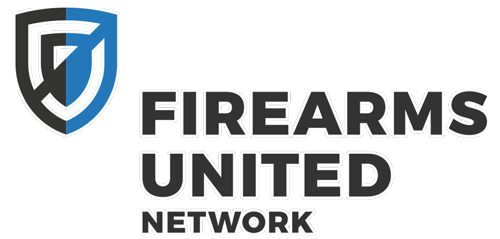

 English
English Deutsch
Deutsch Italiano
Italiano Français
Français Español
Español suomi
suomi Polski
Polski Eesti
Eesti Português
Português český
český Română
Română